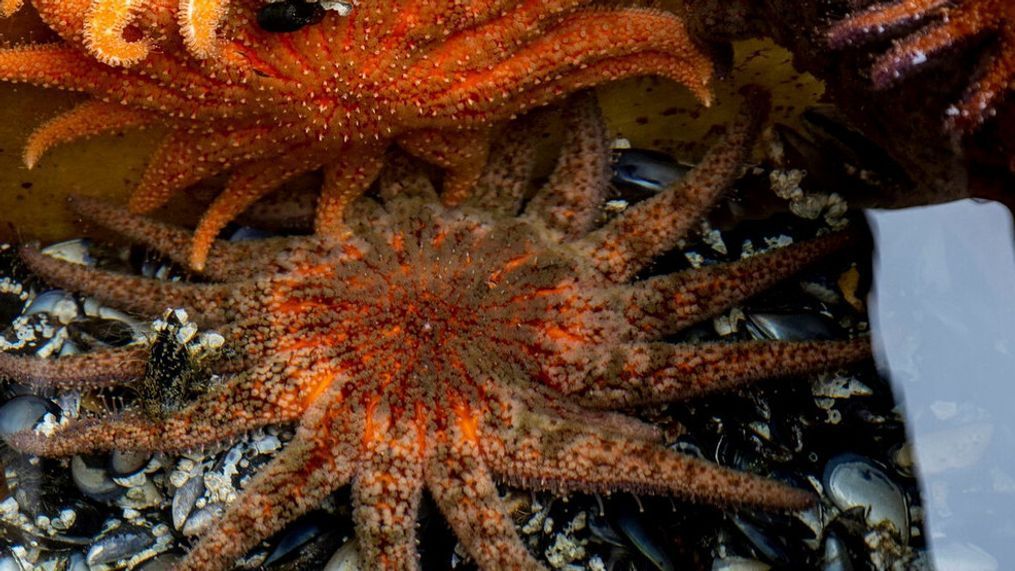Iconic West Coast sunflower sea star faces threatened species designation

OREGON COAST, Ore. (KATU) — Once a popular sight along the Pacific Coast, the sunflower sea star is now edging closer to becoming a threatened species.
The sunflower sea star is the second largest sea star in the world, reaching up to 3 feet wide. With its impressive pinwheel of legs and bright colors, it used to be a ubiquitous part of the coast, with visitors eagerly pointing out and taking pictures with the echinoderm
However, the National Oceanic and Atmospheric Administration is making the recommendation that the star join the threatened species list after a pathogen called Sea Star Wasting Syndrome wiped out more than 90 percent of the species between 2013 to 2017.
The sea stars, despite not being used as a resource by humans or other marine animals, play an important part in the ecosystem, says Dayv Lowry, the Natural Resources Management Specialist at NOAA.
“The interesting thing, though, is the role this species plays in the ecology. It's not eaten by much, but it plays a huge role in consuming clams and urchins and a variety of other invertebrate species,” said Lowry. “And that's really the key piece it plays in the ecosystem, or the food web, so it has this top-down control on things that would eat kelp like sea urchins.”
Essentially, the sea star helps maintain equilibrium in the aquatic ecosystem by consuming other species that could over-graze or negatively affect the biome.
This is why their decline is a cause for worry – the collapse of the sea star population could set off a broader environmental collapse as urchins and mollusks decimate kelp beds, leading to other reliant marine creature populations declining as well.
NOAA says achieving the threatened designation would help raise awareness about the loss of the species, and better track where the sea stars are accidentally getting caught in fishing equipment as well as species decline or growth.
it would also boost funding to study the disease affecting them.
KATU’s Steve Benham previously reported on an effort by the University of Washinton to help preserve the species in British Columbia.
The scientists at Friday Harbor Laboratories on San Juan Island are undertaking an effort to breed the sunflower sea stars with the hope of reintroducing the captive population to the wild.
Due to data on the crash, they believe stars can’t bounce back without human intervention.
In the project, the UoW scientists breed and raise sunflower sea stars from embryos to adult specimens in their lab.
The project was the first of its kind, and the scientists had to discover plenty of new information – such as figuring out what to feed the young stars and in what environmental conditions they need so they will survive and grow.
This effort also helps scientists gather valuable insight into the sea stars, such as their life progression and how they interact with their environment.
Additionally, in February 2023, the Oregon Coast Aquarium announced it was developing a treatment for Sea Star Wasting Syndrome.
The method involves supporting the star’s immune system, as opposed to treating myriad bacterial factors, and had successfully treated several sea stars with various health issues - including wasting.
Hopefully, between heightened conservation efforts, more funding, captive breeding projects, and the treatment method, the iconic sunflower sea star can once again flourish along the West Coast.
